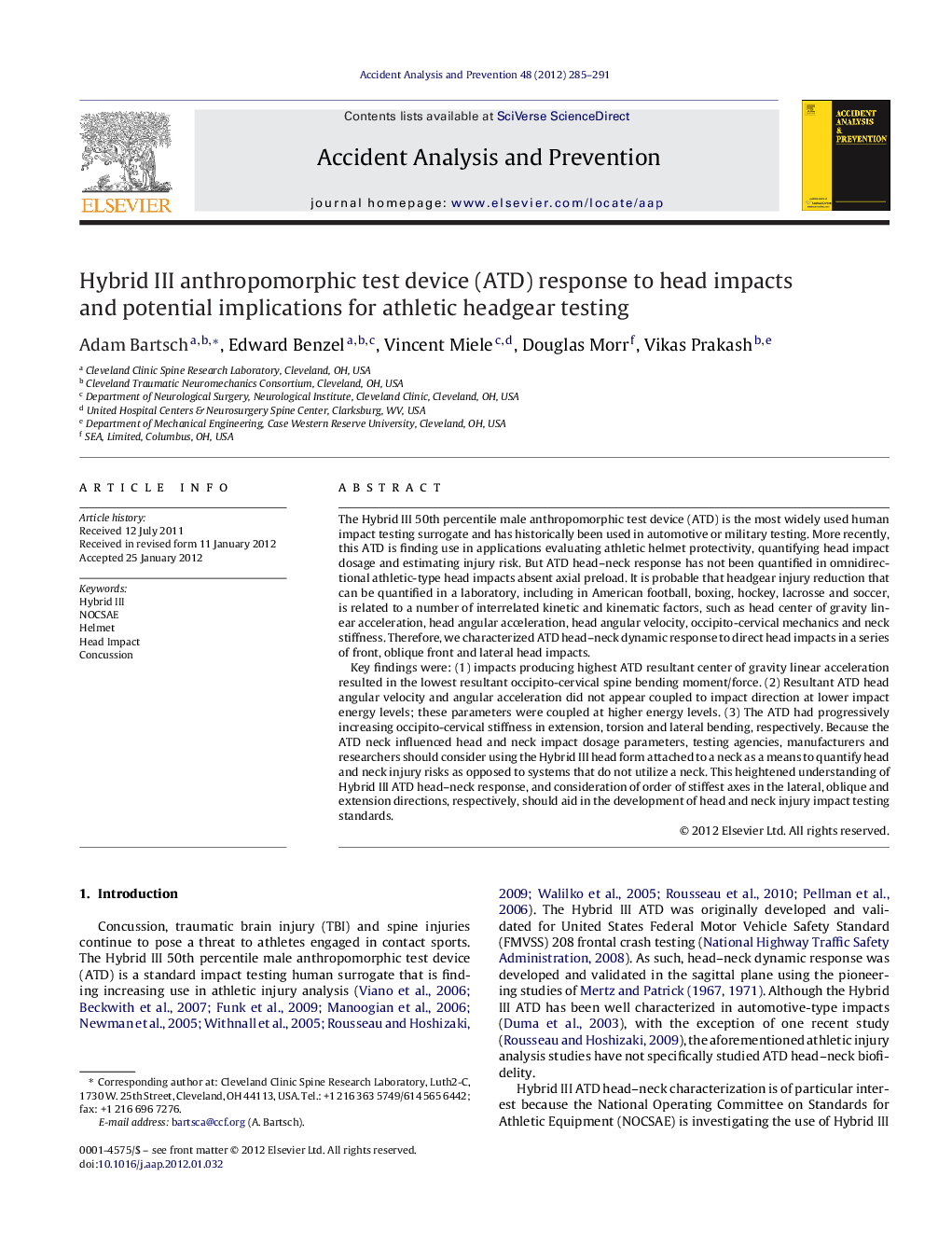| کد مقاله | کد نشریه | سال انتشار | مقاله انگلیسی | نسخه تمام متن |
|---|---|---|---|---|
| 572597 | 1452949 | 2012 | 7 صفحه PDF | دانلود رایگان |

The Hybrid III 50th percentile male anthropomorphic test device (ATD) is the most widely used human impact testing surrogate and has historically been used in automotive or military testing. More recently, this ATD is finding use in applications evaluating athletic helmet protectivity, quantifying head impact dosage and estimating injury risk. But ATD head–neck response has not been quantified in omnidirectional athletic-type head impacts absent axial preload. It is probable that headgear injury reduction that can be quantified in a laboratory, including in American football, boxing, hockey, lacrosse and soccer, is related to a number of interrelated kinetic and kinematic factors, such as head center of gravity linear acceleration, head angular acceleration, head angular velocity, occipito-cervical mechanics and neck stiffness. Therefore, we characterized ATD head–neck dynamic response to direct head impacts in a series of front, oblique front and lateral head impacts.Key findings were: (1) impacts producing highest ATD resultant center of gravity linear acceleration resulted in the lowest resultant occipito-cervical spine bending moment/force. (2) Resultant ATD head angular velocity and angular acceleration did not appear coupled to impact direction at lower impact energy levels; these parameters were coupled at higher energy levels. (3) The ATD had progressively increasing occipito-cervical stiffness in extension, torsion and lateral bending, respectively. Because the ATD neck influenced head and neck impact dosage parameters, testing agencies, manufacturers and researchers should consider using the Hybrid III head form attached to a neck as a means to quantify head and neck injury risks as opposed to systems that do not utilize a neck. This heightened understanding of Hybrid III ATD head–neck response, and consideration of order of stiffest axes in the lateral, oblique and extension directions, respectively, should aid in the development of head and neck injury impact testing standards.
► We conducted athletic-type impacts on a Hybrid III anthropomorphic test device (ATD).
► Highest linear head acceleration had lowest upper neck bending moment/force.
► Angular velocity and angular acceleration were coupled to direction in higher energy impacts.
► The lateral axis was the stiffest, followed by oblique and frontal, respectively.
► NOCSAE standard tests using Hybrid III must consider head–neck stiffness response.
Journal: Accident Analysis & Prevention - Volume 48, September 2012, Pages 285–291